David Reynolds, Karl Napieralla, Joanna Parketny and Menna Jenkins

Research published by School of Education at Swansea University.
Background
An ‘all-age’ also known as an ‘all-through’ school combines at least Primary and Secondary stage of education and at times also Nursery and Senior Phase within a single institution, and provides continuous education for its pupils throughout phases. The school often occupies a single site or is in the process of joining its previously separate campuses, and has one governing body. This model of schooling has been adopted by many countries worldwide, with ‘K-12’ schools in the United States and similar establishments in Canada, Australia, Philippines, India, South Korea, or a Scandinavian ‘Enhedsskole’ in Europe. Since the beginning of the millennium, but particularly after 2010, this model of schooling has been also adopted by many (~200) of English schools, a substantial number (~40) of schools in Scotland and is becoming increasingly popular in Wales. There are currently over 20 allage schools across Wales and according to the most recent estimates, there may be around 40 by September 2018, with plans for more to be established in the coming years. The reasons behind the increasing popularity of this approach to schooling in the Welsh context are manifold. A number of newly formed all-age schools came to existence as a result of rationalisation, and as a by-product of the 21st century schools funding programme that has encouraged innovative approaches to schooling. However, it has soon become apparent that the consequences of joining of traditionally separate phases of education reach way beyond an improved economic efficiency stemming from sharing of financial and human resources, and may have numerous beneficial effects on various aspects of school’s day to day running, professional development of staff, and on the educational experience and outcomes of their pupils. And indeed, these positive effects shared amongst the growing all-age schools network are becoming a driving force behind plans to establish more schools in line with this model. The implications include effects on the leadership and management structure and style, curriculum, pedagogy, transition between the key educational stages, wellbeing, Welsh language, and an involvement and enrichment of wider communities.
Literature Review
The research up to date on the all-age model is very limited. We have used several publications search engines including Educational Resource Information Center, Science Search and Google Scholar amongst others. Internationally, there are a handful of articles on all-age schools in Scandinavian countries and Jamaica that we were able to identify. The paper on all-age schools in Scandinavia (Wiborg, 2004) outlines the trajectory of development of the unique comprehensive school system in Scandinavia that differs from the British one in having non-selective, public schools that cover the whole length of compulsory school age within the same setting, and can be therefore defined as all-age schools. While the article sheds light on socio-economic and political factors that have led to the establishment of this system, it does not offer insight into how it compares in terms of its effectiveness to others. The study conducted by the University of Wolverhampton and Jamaican Ministry of Education on the Jamaican All-Age Schools Project (JAASP) that included 48 all-age schools, found an improvement in pupils’ attendance, quality of teaching and learning, school management and involvement of parents, and the wider community (Jamaican All-Age Schools Project, 2003). The JAASP project ran between 2000 and 2003 and included a number of training programmes such as workshops for teachers to develop their understanding of curricula and skills in literacy, numeracy, special needs and learning support, and training for managers in leadership and management and in school improvement planning. Additionally, schools were resourced with books and computers, and community participation facilitators were recruited to enable better community engagement. While the reported effects are clearly beneficial, they appear to be related to the number of interventions that were put in place, rather than intrinsic features of an allage model.
The majority of evidence for potential advantages that an all-age model might have over the traditional one within the British context, is either anecdotal or has come to light as a result of HM Inspectorate of Education inspection findings and a couple of small research projects. The ‘Opening up learning in all-through schools’ report on Scottish all-age schools (2010) focuses on teaching and learning outcomes and a collective aspect of an all-age endeavour to create continuous and effective learning environments for children.
Department for Education and Skills Resource (2006) commissioned by the Innovations Unit offers a guideline for setting up an all-age school structured around five principal areas: Leadership, Management and Governance; Curriculum; Resources; Ethos and Community. The National College for School Leadership (2011) report explores the opportunities and challenges of all-age leadership and management, and benefits for teaching and learning, pupils’ educational experiences and outcomes, and professional development for teachers. Lastly, the University of Bristol’s (2010) study that includes six all-age schools in its sample investigates transition related issues and the associated dip in academic performance. Findings in all of these sources consistently point out to the following strengths of the allage model:
- Improved teaching and learning resulting from joint working and planning, sharing of good practice and developing uniform standards for teaching, learning and assessment framework, and a common understanding of transition requirements;
- Smoother transition between phases for the pupils arising from familiarity with the school and teachers, cross-phase pedagogical practices and clearer expectations as children progress through the key educational stages;
- Reduced performance dips owing to the better coherence, continuity but also flexibility associated with cross-phase teaching and learning;
- Strong ethos and high quality of relationships resulting from common vision and core values, continuity of experience and consistent approach in addressing any behavioural issues;
- Better pastoral care and emphasis on wellbeing owing to the better knowledge of pupils remaining in the same environment throughout their learning journey;
- Enhanced support for children with additional learning needs and a culture of inclusion;
- Improved parental involvement that carries over from the primary through to the secondary stage, and increased opportunities for community engagement and development;
- Better economic efficiency due to sharing of resources.
Scope
The aim of our project was to initially investigate the effects of all-age model and to gain insight into how it compares with the traditional one within the Welsh context, in preparation for a larger scale research study. We held a meeting with the Welsh All-Age Schools Network and were given a list of schools interested in participating in this project. We visited six all-age schools in south, middle and north Wales and carried out semistructured interviews with leaders, teaching staff and pupils throughout a visit day. We explored the challenges in setting up and running an all-age school, the successes, and the prognoses for future developments as well as the impact of the model on schools, their staff and pupils and their local communities. Details and outcomes of our discussions are outlined in the Summary of Findings section (for a visit day agenda and script please see Appendix 1 and Appendix 2 respectively).
In an endeavour to get an understanding of a wider spectrum of issues relevant to different stages of their development trajectory, we selected schools with differing histories, some long established as an all-age school and some at their early stages of merging with the partner primary school (for a list of visited schools please see Appendix 3). Selected schools had also different socio-economic backgrounds affecting their intake, including a range of Free School Meals ratios, mix of urban and rural locations, from areas of high, middle and low rates of employment, and varied level of interaction with their communities. Our preliminary findings offer an opportunity to reflect on unique features of the all-age model and point in the directions for the future research.
Summary of Findings
Our interviews with school leaders, teaching staff and pupils were structured around the themes that included the effects on the leadership and management, teaching and learning, wellbeing and transition related issues, Welsh language, and involvement of parents and communities. The summary of our findings is presented accordingly, and offers insight into each of the topics discussed.
The model comparison with other models
We have asked the visited schools about the differences between the traditional and all-age school set up, and perceived benefits and challenges associated with the all-age model. Below is what we have learned:
Benefits:
- Opportunities for developing of single policy and curriculum which allow for greater consistency in practice;
- Seamless transition between phases for the pupils having positive effect on their attainment and wellbeing;
- Opportunities for cross-phased teaching allowing sharing of good practice and teaching and learning strategies for the benefit of pupils, as well as staff and their professional development;
- Reduced exclusions linked to the culture of inclusion and the effects of older pupils moderating their behaviour as they interact with younger ones - pupil mentoring, peer mediation etc.;
- Sharing of facilities and resources;
- Enhanced bursary and business support.
Challenges:
- Primary and secondary phases being often located on different sites contributing to the lingering feeling of ‘us and them’ accompanied by a belief that being on one site will help build a stronger team;
- Primary leaders feel at times that they are underrepresented in the Senior Leadership Team;
- Different timings in different phases, identified as a barrier to efficient cross-phased teaching;
- Many teachers lack cross-phase training and some feel out of their depth despite willingness to teach cross phases;
- Primary partner schools in the same cluster as visited schools, feeling left out of activities. To address that schools organise transition days that are very successful;
Issues with the school set up
Setting up an all-age school is an ambitious and a difficult endeavour. Our study identified a number of common issues that leaders have come across in this process. They include the following:
- Inconsistency in allocated time for establishing the school prior to the opening, leading to difficulties with setting up a leadership and management structure;
- Staff redundancies due to the restructuring;
- Partner schools being apprehensive about coming together, typically due to reluctance to upset the existing status quo, need to merge of different ethos, and the uncertainty brought about by the coming change;
- Public perception and opposition towards the idea of the new school and concerns about the large age range of pupils and younger children mixing with the older ones;
- Bringing very different at times communities together and concerns about forming and maintaining new, positive relationships;
- Varying support of Local Authorities and their predominant focus on capital spend rather than on developing teaching and learning;
- Primary and Secondary phases being located on different campuses causing logistic difficulties;
- Different curricular approaches in partner schools;
- Different timetables in different phases causing difficulty with cross-phased teaching.
Early successes
Our interviewees have agreed that the difficulties in setting up the school, and differences in approaches between phases, have been initially challenging, but have also offered numerous opportunities for innovation and positive change. The early successes shared by the schools in our sample include:
- Development of the all-age ethos, culture and atmosphere of friendliness and support between children of all ages;
- Significant drop in exclusions and dramatic behaviour improvement;
- Inclusion and support for pupils with additional learning needs;
- Better pastoral care due to better knowledge of pupils and sharing of information between teachers in different phases;
- Collaboration of teaching staff, sharing of ideas and good practice, consistent approach to teaching and continuum of learning;
- Minimising of the dip in performance that pupils experience in the Year 7 and 8. Reduction in the repetition that may be taking place in the single phase set ups due to the in depth knowledge of what has been covered prior to pupils progressing to the secondary phase.
- Collaboration on the leadership level on developing the same strategies and practice, and evaluation and planning forward as one entity, which benefits the whole school and all pupils;
- The Foundation phase feeding through to secondary phase with thematic teaching and successful futures agenda;
- Children get to know the teachers, the school and build an idea of future expectations before they move on to the secondary phase which boosts their confidence as they progress through key educational stages;
- A greater amount of extra-curricular support and opportunities on offer for pupils and the community, including numerous clubs across the schools i.e. art club or cooking club, where teachers, pupils from all phases and their parents come together and learn from each other.
The effects on leadership and management
It has become clear that an all-age model has a substantial impact on the leadership and management structure that require a design that allows for effective and efficient running of the school and coordinating of complex activities. Below are the common characteristics:
- A typical set up includes an Executive Headteacher with the responsibility over the whole school and Assistant/Deputy Headteachers or Phase Leaders overseeing the day to day running of the primary and secondary phases;
- New roles are emerging such as leaders of learning with cross-phase responsibilities;
- In some schools subject specific departments with leaders having a whole school focus are being developed;
- Strategic planning is joint rather than separate allowing for developing of the shared vision and consistent practice;
- Data tracking is carried out throughout the whole school allowing for better monitoring of progress and outcomes to inform future planning.
The effects on learning and teaching
Despite the initial uncertainty about the capacity to effectively deliver and adapt to the new teaching and learning requirements brought about by the all-age model, both leaders and teaching staff were in agreement that they face a unique opportunity to transform traditional teaching and learning strategies and develop more flexible curricula in the future. This in turn benefits staff professional development and enriches educational experience and outcomes for the pupils. Several implications for teaching and learning have emerged from our discussions:
- Skills and strategies used in the primary phase occur to be transferable to the secondary with a positive effect i.e. thematic and skill building approach, project work, presentations or the use of technology;
- Currently most schools curriculum-wise are following primary and secondary models but do a lot of cross-phase work across many subjects, (particularly creative/arts, languages, literacy and numeracy and technology). Additionally and importantly, their work extends onto the clusters of partner primary schools;
- The expertise of subject leaders is feeding through to primary phase and pupils respond well to this;
- Increased transparency and coherence in teaching practice resulting from the triad working adopted within many all-age schools and a wider cluster, allowing teachers observe each other’s lessons and mutual learning;
- Positive impact on transition between phases due to a better staff knowledge of what children are being taught in each phase. Currently the aim is to standardise the approach across the wider clusters;
- Technology is having a significant impact on teaching and learning as information is stored online and teachers can access materials that others have covered with pupils, which in turn helps with the consistency.
The effects on the community, involvement of parents/carers and wider community
Contrary to the initial concerns regarding the public reception and parental and community involvement with the new all-age schools, it appears that the merging of different schools and the continuity of educational journey that pupils go through, encourage community building rather than division. Schools that we visited pointed out to the following outcomes:
- Stronger community connectedness emerges as a result of pupils mixing together with their parents alongside;
- General parental involvement beyond parents’ evenings is enhanced by means of natural progression as children stay within the same school environment. The performing arts and sporting events are very well attended;
- Schools serve as a facility for the community with different groups using the space for numerous activities. Sports facilities are utilised in particular, but there are also various workshops/classes being run and one of the schools has opened a community café;
- Schools communicate with parents more frequently and effectively, particularly with the use of technology.
The effects on the wellbeing and transition related issues
- Wellbeing is perceived by leaders and teaching staff as being easier to develop than the curriculum;
- Very positive impact on transition related issues. Knowing the school environment, teaching staff and having interacted with senior children help younger pupils get familiar with what is awaiting them and grow in their confidence as they progress through the phases;
- Better pastoral care resulting from the continuity being at the core of the all-age model. Schools’ knowledge of their pupils and awareness of any issues when they enter the secondary phase is better than it often would be in a traditional school;
- Enhanced inclusion and support for children with additional learning needs;
- Positive impact on pupils’ behaviour, particularly older ones who moderate their behaviour, as interacting with younger children helps them develop nurturing and supportive skills. Younger children look up to older ones and treat them as role models;
- Sense of community and togetherness which foster a warm and nurturing atmosphere. Children report interacting with each other beyond their Years as it would typically be the case in the traditional school setting. This is encouraged not only by the greater physical proximity and sharing of facilities, particularly in schools that occupy one site, but also if not more so, by various cross-phase activities taking place and a ‘whole school’ ethos.
The effects on Welsh language
The development plans for the future
All schools in our sample have ambitious plans for the development and utilising of the transformative potential of the all-age model to its fullest. Several ideas for further growth emerged:
- More formalised cluster working, sharing of the resources and good practice amongst the schools, as well as organising more of shared activities;
- Changing the mind-set further, and creating a workforce who sees themselves as all-age educators;
- Bringing timetables together as this will create greater opportunities for cross-phased teaching;
- More single policy development;
- Getting the Foundation phase right;
- Joining of and developing a more flexible curriculum.
A couple of additional reflections were shared with us as important implications of adopting an all-age model and suggestions for future developments:
- As the all-age model is becoming more wide-spread it is important to provide people with appropriate training, with an emphasis on cross phased teaching and learning.
- Better guidelines for inspecting all-age schools are needed as currently schools are being inspected as if they were separate entities.
Conclusions & Recommendations
The aim of our project was to shed some light on the characteristic features of an all-age model and gain an understanding of how it distinguished from single phase establishments. We were able to identify a number of differences, explore the challenges with the school set up and running, and importantly, recognise a number of innovative solutions and benefits of the joint working for pupils, as well as staff that have the potential to inspire the transformation of the Welsh educational system in the future.
Apart from the practical advantages of sharing of the resources which promotes the efficiency of all-age schools, of particular interest are the emerging benefits of this model on the pedagogy, and an innovative and synergic approach to teaching and learning that allows for combining of the most effective elements of teaching strategies in different educational phases for the benefit of pupil’s learning outcomes. Moreover, this approach appears to stimulate the professional development of staff, enrichment and diversification of their skillset, and with it, increase in their professional competence and confidence to create the best learning environment for their pupils. This combined with the continuity of the education throughout the key stages within the same environment can allow for greater coherence and reduction in the transition related issues, which in consequence may minimise pupil’s stress, enhance their wellbeing and give them a better chance for more favourable educational outcomes and a higher quality of life in the future.
Building a society of competent, confident and happy young people, ready to embrace the challenges of an adult life, and encouraging the community connectedness lie at the core of the Welsh Government vision and we believe that an all-age model has the potential to aide this vision to materialise. The identified benefits for the wellbeing of children and the more active participation of parents and wider communities enabled by the all-age model could be the solution worth serious consideration.
Based on the existing evidence and our initial findings we believe that the potential of the all-age model and the opportunities it brings for innovation and transformation of the educational practice require further exploration. We propose the following future research directions and objectives:
- Evaluation of the effects on academic attainment measured at the key educational stages (this could be explored with the existing body of secondary data held by the Welsh Government);
- Evaluation of the impact on pupil and staff wellbeing;
- Analysis of the characteristics of new approaches and strategies to teaching and learning, particularly cross-phase practices;
- Analysis of the bespoke needs in terms of qualifications and Professional Learning of all staff working within an all-age environment; with separate studies for leaders, teachers, support workers and non-teaching staff;
- Exploration of the effects on the educational community in terms of partner, cluster, Local Authority, and regional working.
- Measuring impact in terms of re-energising and regeneration of the wider community, adult and continuing learning, sport, leisure and cultural opportunities in terms of increased participation.
- Additional opportunities for learning and leisure outside the classroom, and outside the normal school day;
We also propose that the following recommendations are taken into consideration in the future policy development:
- Recognition of the all-age movement as a potentially significant drive for transformation of the Welsh educational landscape by the Welsh Government;
- Appointment of Senior Leadership to an all-age setting with an appropriate Lead in time and adequate support from the Local Authority in set up and transition;
- Appointment of a Governing Body with a specialist skill set to oversee the set up and transition;
- The National Academy for Educational Leadership to explore opportunities for bespoke Leadership courses/ qualifications for Leaders currently within all-age schools, and for those wishing to pursue career opportunities within the sector;
- Developing cross phase training and resources for teachers to promote their professional development and allow for the delivery of high quality cross phase teaching;
- Further developments in reviewing and tracking Initial Teacher Education to include exploration of the establishment of new qualifications and compulsory practical experiences for teaching, and support staff wishing to work within an all-age setting;
- A centrally kept compendium of good practice in setting up all-age schools to include lessons learnt in consultation (staff, pupils, communities affected), set up (leadership structures, single policy development, school organisation), development of cross phase working (teaching and learning, health and wellbeing, behaviour, policies and approaches to Additional Learning Needs), development of pupils’ voice, additional learning and extracurricular opportunities, effects on use of the Welsh Language;
Reviews into:
- Quality of teaching and learning within each organisation and phases coming together;
- Use of technology within each organisation in terms of teaching and learning, administration, and inward and outward communication;
- And announced as parts of the initial decision to set up/amalgamate and carried out during the planning phase. Decisions about cross phase teaching and structures to be made following review findings;
- Welsh Government to seek evidence of the above in decision making discussions with Local Authorities.
The all-age model of schooling continues to increase in popularity in Wales and has already influenced educational practices across the country. We are witnessing an ongoing transformation rich in potential for innovation and creative solutions. We could allow for this transformation to continue to unfold organically, or ensure that the direction it takes is evidence based and streamlined in a fashion that enables the best possible outcomes for the Welsh young people and communities. This is an outstanding opportunity to undertake unprecedented research into unique features of a Welsh allage school network that would enable informed decision making and policy design for the benefit of children today and future generations.
Acknowledgements
Swansea University School of Education would like to thank the Welsh All-Age School Network for support and participation in this project.
Schools included in the project:
Ebbw Fawr Learning Community, St Brigid’s School , Ysgol Bae Baglan , Ysgol Bro Hyddgen, Ysgol Gymraeg Ystalyfera-Bro Dur, Ysgol Llanhari
AUTHORS
David Reynolds, Karl Napieralla, Joanna Parketny and Menna Jenkins










